Biking is one of the most common outdoor activities that people do for leisure or health purposes. Some even take it to the next level by joining biking competitions, exploring terrains, and challenging their physical limits. Regardless of the reason, it is vital to make sure that the bike is in its best condition for a smooth and safe ride. One of the things that matter in ensuring the smooth ride of a bike is the flange spacing.
Firstly, what is a flange spacing? Flange spacing usually refers to the distance between the two flanges, which are the round metal pieces located on each side of the bike's wheels. The hub, which is responsible for the attachment of the spokes to the wheel, bolsters these flanges. Generally, the hub of a bike is the midpoint of the flanges, and the spokes add more structure to the overall system. The flange spacing of a bike is crucial as it maximizes the tension of the spokes, which prevents loose wheels.
Secondly, the flange spacing affects the bike's overall stability and durability. When the flange spacing is not appropriately set, it causes the spokes to loosen up, which makes the wheel wobble. This issue can compromise the balance of the bike and its ability to keep straight on roads, especially on bumpy and rough terrains. Additionally, a loose spoke can cause damage to the wheel rim, resulting in deformation and eventually failure over time. This can be quite dangerous, especially when the rider is going at high speeds. Therefore, the correct spacing of the flanges can contribute to the bike's overall durability and the safety of the rider.
Thirdly, bike manufacturers usually have different flange-spacing standards for different bike types. For instance, mountain bikes have wider flange spacing than road bikes. This is due to the fact that mountain bikes are built to withstand rough terrain and heavy impact, while road bikes are designed for smooth pavement and speed. Therefore, when purchasing a bike, it is essential to check the flange spacing and consider your use and preference to avoid any inconvenience or safety hazards.
Fourthly, the number of teeth on the bike's wheel also affects the flange spacing and the overall performance of the bike. The teeth determine the amount of distance covered by each pedal stroke, which is referred to as the gear ratio. A higher gear ratio means there is more distance covered per pedal stroke, resulting in more power and speed. On the other hand, a lower gear ratio means less distance and slower speed but better control. Therefore, when choosing the number of teeth for your bike, you should consider your terrain, fitness level, and experience.

In conclusion, the flange spacing is an essential aspect of the bike that contributes to its overall stability, safety, and durability. It is specifically designed according to the bike type, and incorrectly set flanges can compromise the whole system. As a rider, it is crucial to check the flange spacing before purchasing a bike, as it can affect your overall biking experience and safety.
The right flange spacing, together with the appropriate gear ratio, makes for a smooth and enjoyable ride. Therefore, when taking on a bike challenge, keep in mind the importance of flange spacing and ensure that you have the correct system.
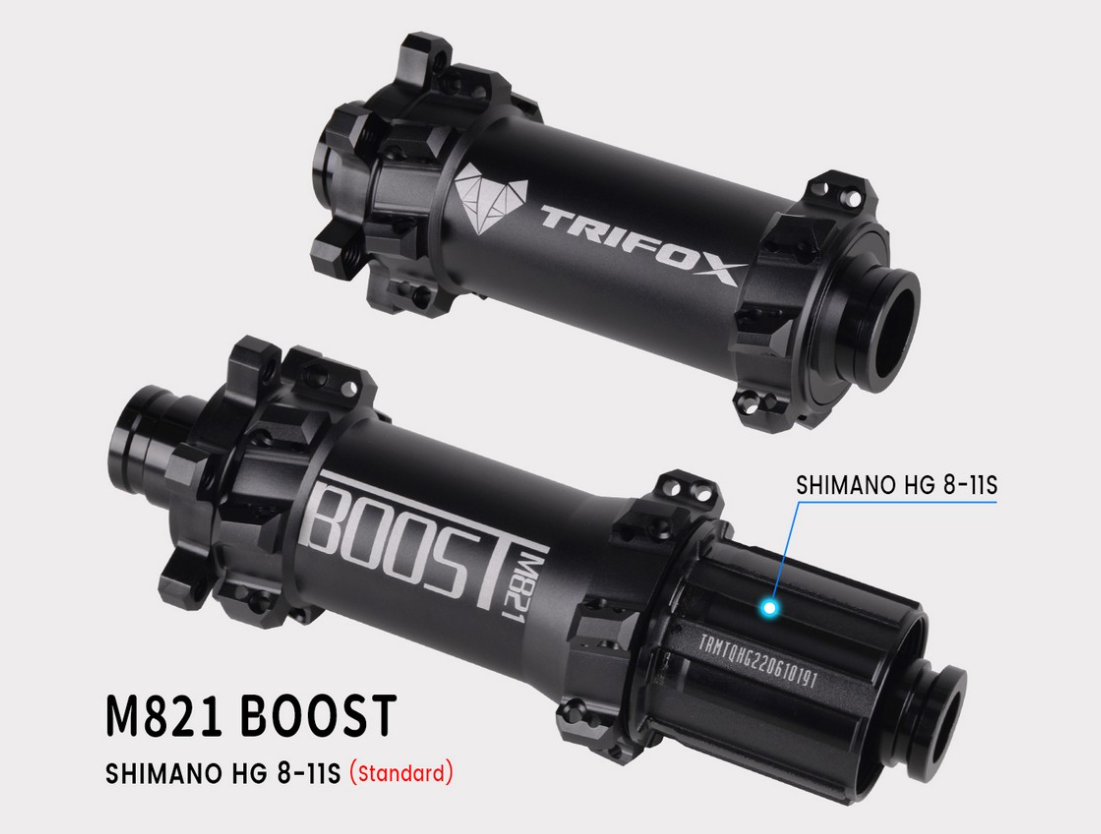

When it comes to bicycles, the hub is an essential part that holds the wheel in place. Over the years, the design of the hub has undergone significant changes. From quick-release setups to thru-axle and boost options, bike makers have continuously strived to improve the experience for bike riders.
The hub spacing has become one of the most critical aspects of bike design. If you're looking to buy a new bike or upgrade your existing one, it's essential to understand the differences between hub spacing standards. This article will take you through the different hub spacing standards, their benefits, and which one would be best for you.
1) Quick-Release
The quick-release standard was the most common hub spacing standard in the past. It involved a simple setup where the hub was held in place by a skewer that passed through the axle. It made it easy for the rider to change a flat tire or remove the wheel. The quick-release standard is still common in road bikes and some mountain bikes. Its disadvantage is that it's not as stiff as the newer options, making it unsuitable for demanding mountain bike applications.
2) Thru-Axle
The thru-axle configuration involves a larger diameter axle that passes through the hub and the fork, locking the wheel in place. The thru-axle standard offers better stability and stiffness compared to the quick-release. This makes it more suitable for mountain bikes and other high-performance bicycles. The thru-axle standard has become popular in recent years, and it's likely to become the standard hub spacing for most bicycles.
3) Boost
Boost is a hub spacing standard developed by mountain bike makers to improve the stiffness and handling of mountain bikes. Boost spacing involves a longer thru-axle and wider hub spacing than standard thru-axle spacing. The wider spacing provides more clearance for wider tires and improves the bike's stability. The Boost spacing standard has become popular in recent years and is now common in most new mountain bikes.
4) Super Boost
Super Boost is a hub spacing standard developed to improve the handling of bikes with plus-size or fat tires. It features an even wider spacing than Boost, making it more comfortable to handle larger tires without sacrificing stability. Super Boost standard is not yet a common feature in most bicycles, but it's popular in some high-end mountain bikes.
5) Which Hub Spacing Standard is Best for You?
The choice of the hub spacing standard you choose depends on the bike's intended use. If you're looking for a road bike, the quick-release standard is still suitable. However, for mountain bikes, the thru-axle or Boost standard is the better option, offering better stiffness and stability. If you're looking to fit plus-sized tires or fat tires, the Super Boost standard would be the best option.
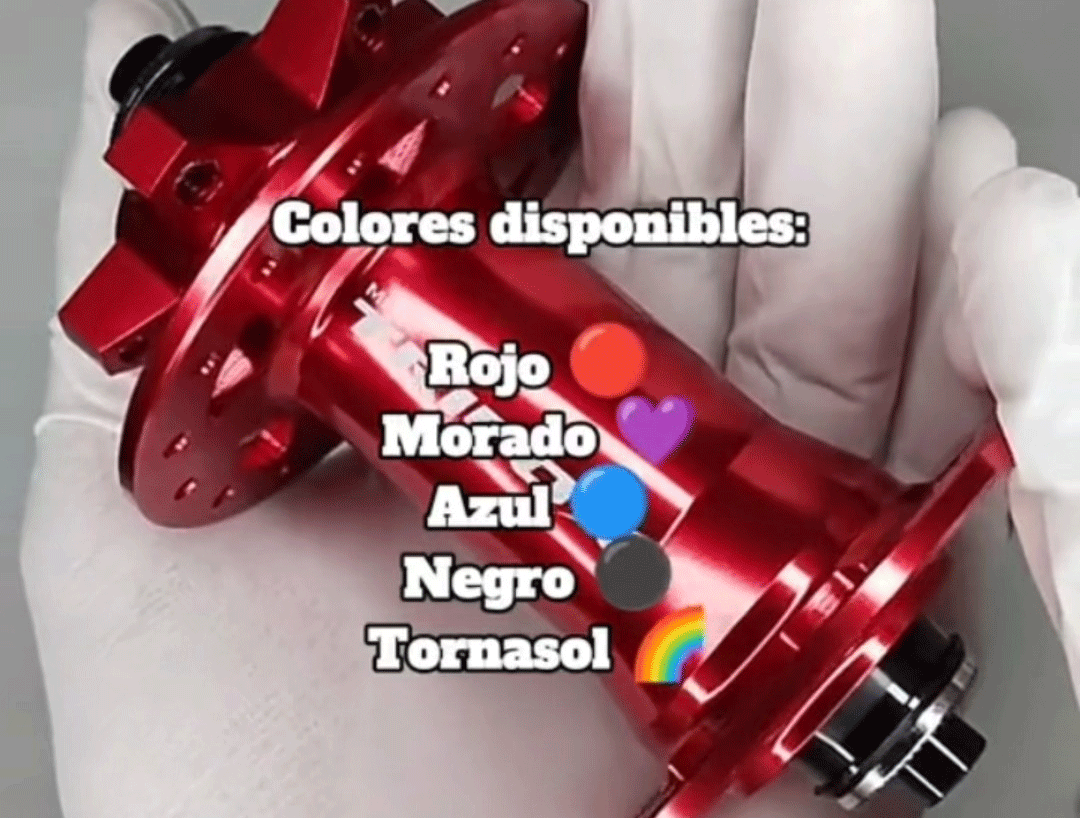
Conclusion:
Understanding hub spacing standards is essential when it comes to buying a new bike or upgrading your existing one. Each standard has its benefits and drawbacks, making it essential to choose one that suits your needs. While the quick-release standard is still prevalent in road bikes, the thru-axle and Boost/Hope hub spacing standards are becoming more popular in mountain bikes. The Super Boost standard is still a new concept, but it's gaining popularity, especially in fat tire bikes.
In conclusion, the choice of hub spacing standard depends on the type of riding you intend to do, and it's essential to choose one that suits your needs.
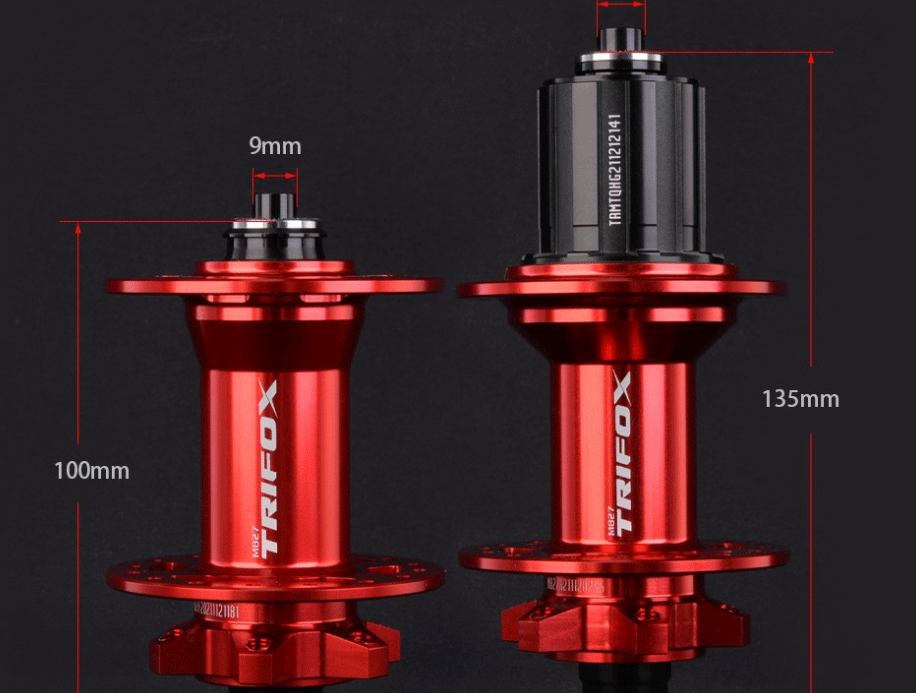
As a cyclist, understanding the components of your bike is crucial to enjoying a smooth ride and maintaining your bike's optimum performance. One of the essential components you should not overlook is your bike hub. In this comprehensive guide, we will focus our discussion on disc hubs and learn about the Trifox Bike Hub M827 designed for MTB.
Whether you are a professional cyclist or a weekend rider, this guide will provide you with all the necessary knowledge to understand disc hubs and the Trifox Bike Hub M827.
What is a bike hub?
Before we dive into disc hubs, let's briefly talk about bike hubs. A bike hub is the center part of your bike's wheels that connect the spokes to the axle, allowing the wheels to spin on the bike frame. A hub's construction can significantly impact a wheel's performance, including speed, stiffness, and durability. In summary, a bike hub is a crucial component of your bike's drivetrain and requires careful consideration when selecting a new one.
What are disc hubs?
Disc hubs, also known as disc brake hubs, are bike hubs designed to mount disc brake rotors. Compared to traditional rim brakes, disc brakes offer superior stopping power and better heat dissipation, which makes them a popular choice for off-roading, mountain biking, and other demanding cycling disciplines. To accommodate the disc rotor, disc hubs have a hub shell that's wider than traditional hubs. Also, disc hubs can be designed to accept different types of through-axle or quick-release standards depending on your bike's frame requirements.
Introducing the Trifox Bike Hub M827
The Trifox Bike Hub M827 is a premium quality disc hub designed for MTB riders. The hub is constructed with an aluminum alloy shell and comes with easily interchangeable quick-release and thru-axle bases. The front hub accepts a 15*100mm thru-axle, while the rear hub accepts a 12*142mm thru-axle, which are both standard sizes for MTBs. The hub also features high precision sealed bearings, which offer exceptional smoothness and durability. The Trifox Bike Hub M827 is a reliable, lightweight, and high-performance hub that ensures a smooth ride on the trails.
Sizing and Weight
The Trifox Bike Hub M827 comes with a front hub weight of 165g and a rear hub weight of 314g. When selecting a bike hub, it's important to consider the size and weight of the hub, as they can affect your bike's overall weight, stability, and performance. The M827 front and rear hub sizes are standard for MTBs, but it's essential to ensure that your bike frame meets these requirements before purchasing. The Trifox hub's lightweight construction means you can enjoy a more responsive and agile ride, especially if you're into MTB racing or climbing challenging hills.
Installation and Maintenance
Installing the Trifox Bike Hub M827 is a straightforward process that requires basic bike mechanic skills. You will need to remove your bike's old hub, install the Trifox hub, and mount the disc brake rotor. Ensure that you follow the manufacturer's instructions to avoid any damage to the hub or your bike. Regular maintenance is necessary to keep your bike hub in top condition, and this includes routine cleaning, greasing, and bearing replacement when necessary. If you're unsure about the maintenance process, you can consult a professional bike mechanic or refer to the manufacturer's instructions.
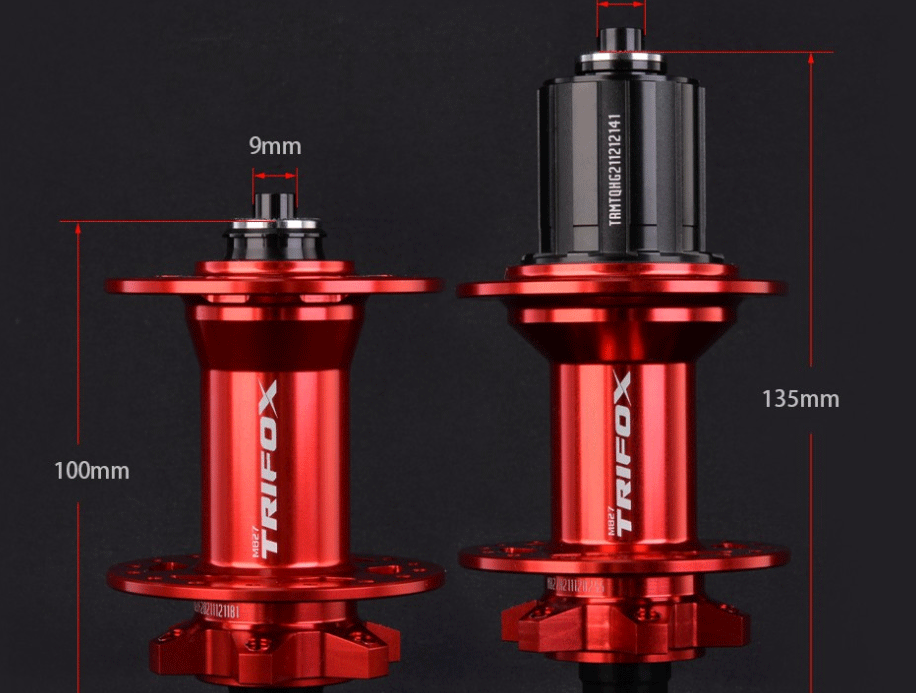
Conclusion:
Understanding disc hubs is essential if you want to improve your bike's performance and ride quality. The Trifox Bike Hub M827 is an excellent choice for MTB riders who value lightweight, durability, and high-performance. When selecting a bike hub, ensure that you consider the hub's size, weight, compatibility, installation, and maintenance. By doing so, you'll be able to choose a reliable bike hub that will provide you with an enjoyable and smooth ride on any terrain.
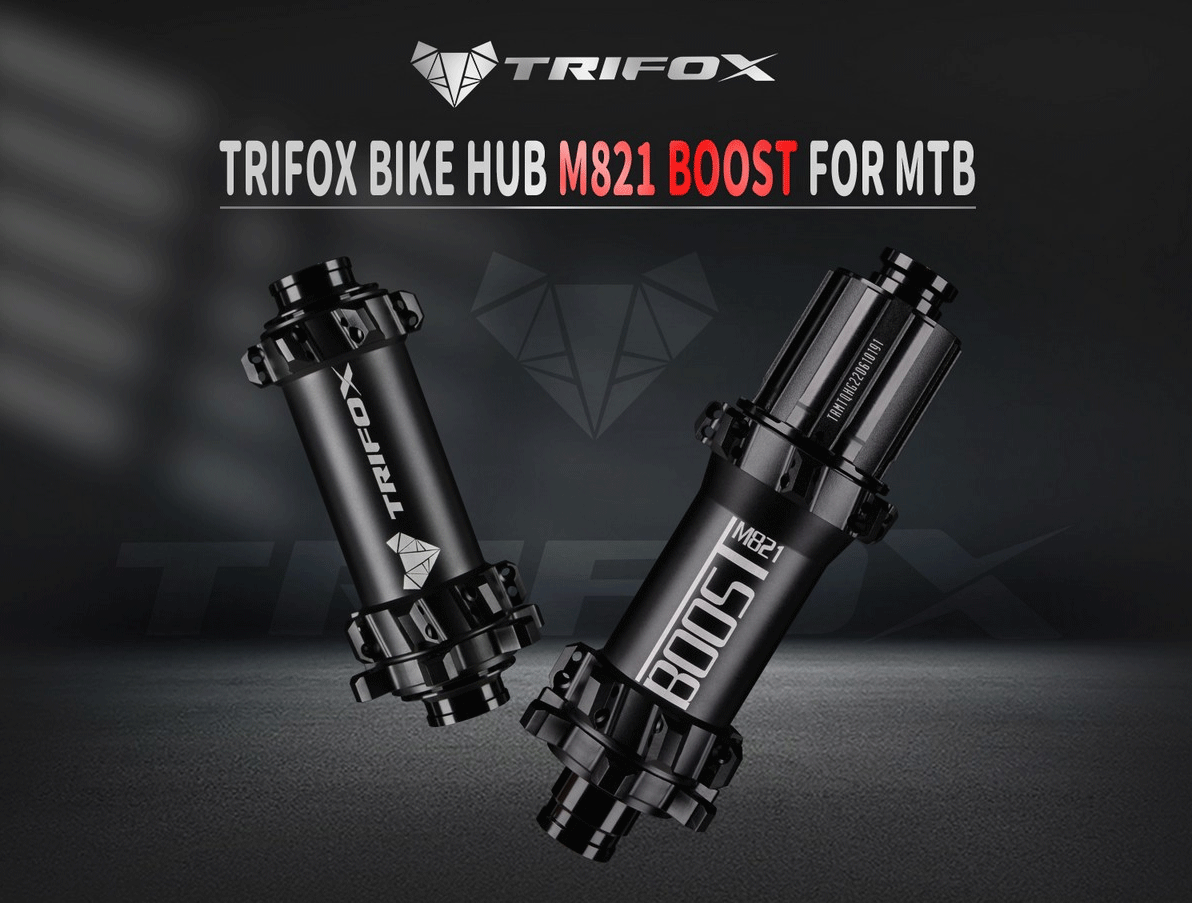
Bicycles have been a popular mode of transportation for a long time now, and their parts have been evolving too. Although quick release axles have become the norm, some riders still prefer bolt-on axles due to their strength and security. If you are one of those riders who would like to convert your bike hub to bolt-on axles, then you have come to the right place.In this post, we will discuss How to convert a hub to bolt-on axles
Step 1: Remove the quick-release axle
The first step in converting your bike hub to bolt-on axles is to remove the quick-release axle. Start by opening the quick release lever and unscrewing the axle counter-clockwise. Hold the nut on the opposite side with a thin wrench to prevent the axle from turning. Once the axle comes out, remove the bearings and keep them aside.
Step 2: Remove the washers and cones
Next, remove the washers and cones from the hub. You may need to use a cone wrench to loosen the cones. Keep the washers and cones aside.
Step 3: Insert the bolt-on axles
Insert the bolt-on axles into the hub and tighten them with a cone wrench. Make sure the axles are tightened evenly on both sides, so the wheel runs straight. Place one washer and cone on each axle, followed by the bearings. Push the axle through the hub and secure the other set of cone and washer.
Step 4: Check the wheel alignment
Check the wheel alignment by placing it on a flat surface. If the wheel wobbles or tilts to a side, you may need to adjust the cones. Loosen the axle nut on the opposite side and tighten the other side slightly until the wheel runs straight. Repeat until the wheel is perfectly aligned.
Step 5: Secure the bolt-on axles
Once the wheel is aligned, secure the bolt-on axles by tightening the nuts on both sides with a wrench. Make sure the nuts are tightened evenly, not too tight or too loose. You can also use a torque wrench to ensure the right amount of tightness.
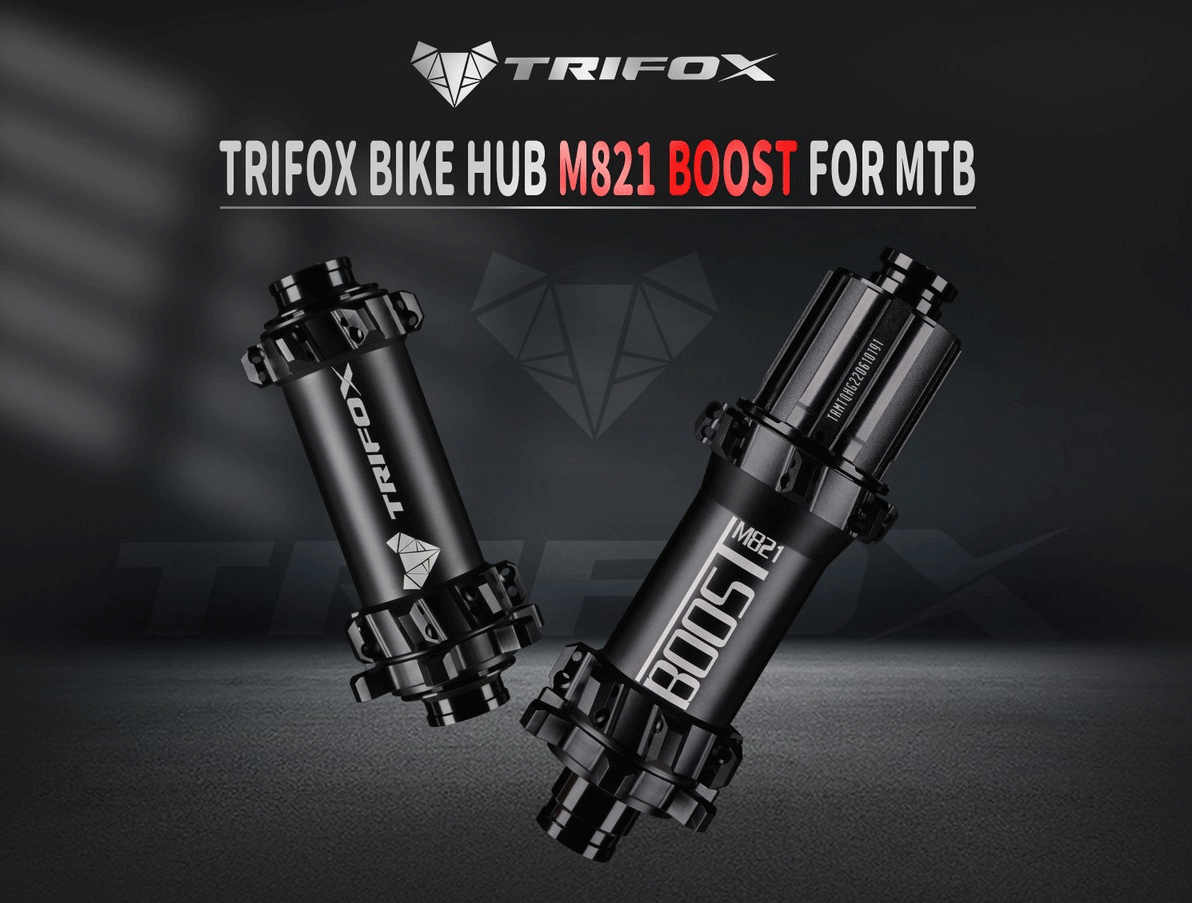
Conclusion:
There you have it, the ultimate guide to How to convert a hub to bolt-on axles. It might seem daunting at first, but with some patience and the right tools, it's actually pretty easy. By converting to bolt-on axles, you'll have a more secure and sturdy ride. Just remember that safety is always the top priority when working on your bike, so don't hesitate to seek professional help if needed. Happy biking!
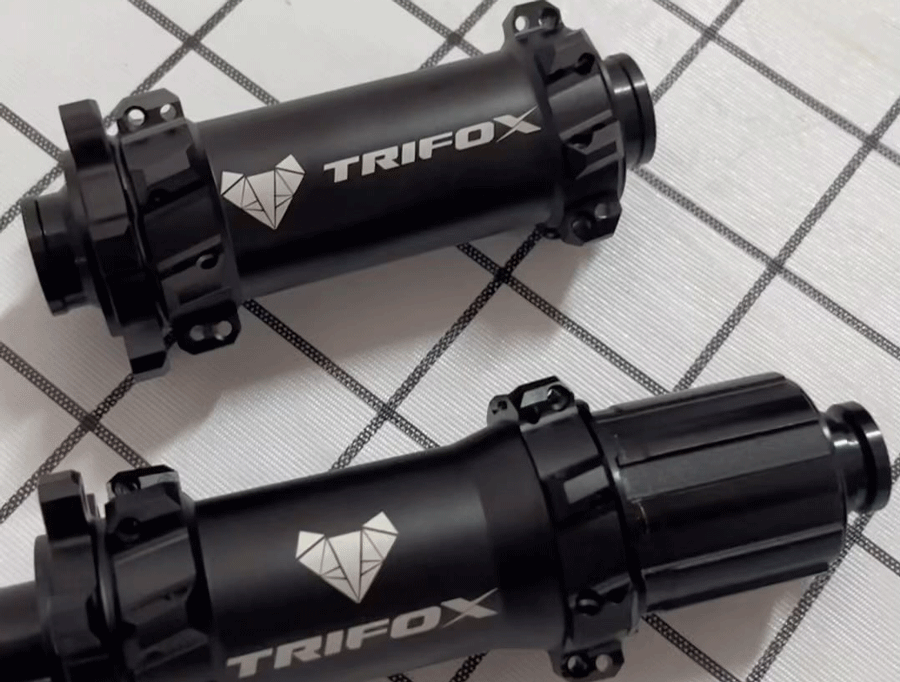
Measuring the spoke hole diameter on a hub is a crucial step in building or servicing a wheel. An accurate measurement will help you choose the right spoke and nipple size, improve wheel strength, and prevent spoke breakage.
In this blog post, we will guide you on how to measure the spoke hole diameter on a hub.
Step 1: Remove the rim tape and tire - Before you can start measuring, you need to remove the rim tape and tire from the rim. Flip the wheel upside down and unscrew the nipples and spokes using a spoke wrench. Be extra careful not to damage the threads.
Step 2: Clean the spoke holes - Next, you need to clean the spoke holes. Use a small brush or rag to clean out any dirt or debris inside the hole to ensure accurate measurements. Make sure to remove any remaining grease if the holes were previously lubricated.
Step 3: Use a spoke gauge - A spoke gauge is a handy tool that measures the diameter of the spoke holes. Insert the spoke gauge into the hole, and the gauge's end with the different diameters should sit flush with the rim's flange. The gauge's corresponding diameter will be displayed, which is the diameter of your spoke hole. Repeat this process for all the spoke holes, as they may vary in size.
Step 4: Measure manually - In case you don't have a spoke gauge, don't worry, you can still measure manually. Take a digital caliper or a vernier caliper with a depth micrometer and a set of small measuring rods. Place the measuring rods one by one inside the spoke hole, and then use the depth micrometer to read the diameter. Be careful not to push the measuring rod too hard inside the hole, which can cause a false measurement.
Step 5: Verify the measurements - After measuring all the spoke holes, it's essential to validate your measurements. Measure each hole's diameter at least three times to ensure accuracy and identify any inconsistencies. If the measurements vary, take the average of the measurements and use this as the base diameter.
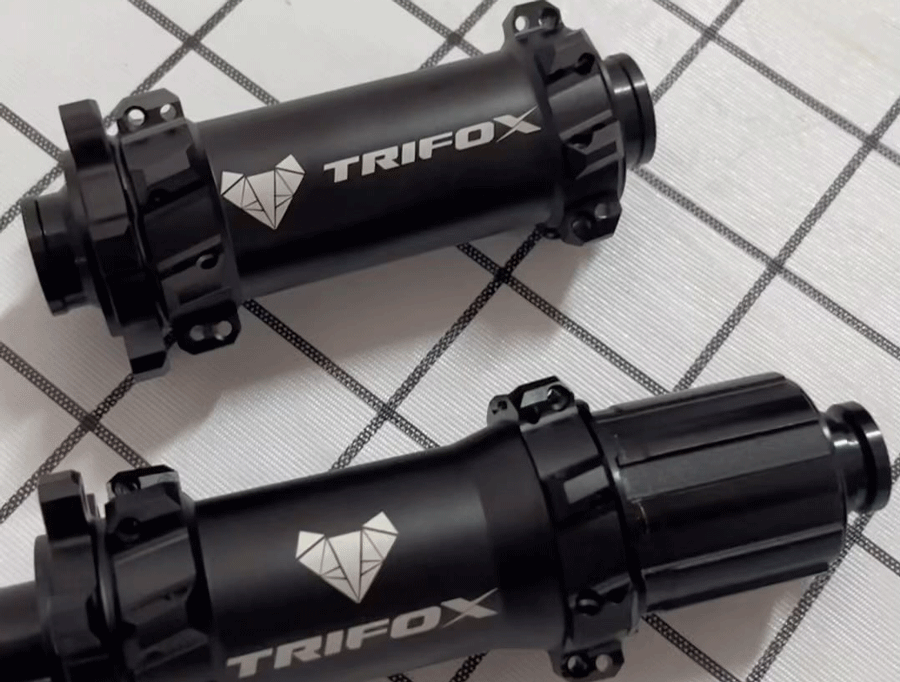
Conclusion: Measuring the spoke hole diameter is a simple yet crucial step in building or servicing a wheel. With the correct spoke and nipple size, a strong and precise wheel can be assembled. Follow these steps, and you will be able to measure your spoke holes accurately and ensure the durability and quality of your wheels.
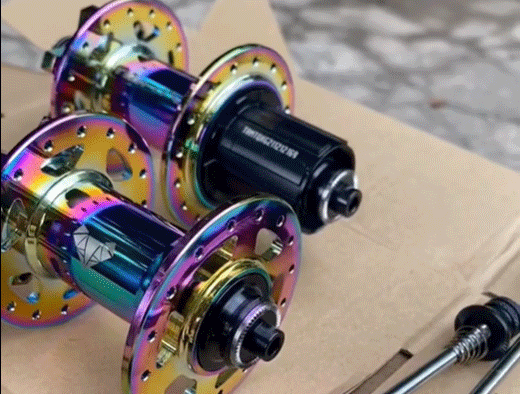
Smooth and seamless cycling is every cyclist's dream. And, the performance of your bike's hub is a crucial factor in determining how smooth your ride will be. If you're a frequent cyclist, the wear and tear on your bike's hub can start to show through in the form of decreased performance. A hub overhaul might be what your bike needs to restore the optimal performance you need. In this article, we will take you through everything you need to know about hub overhaul so you can enjoy a smooth riding experience.
1. What is a Hub Overhaul?
A hub overhaul is a maintenance procedure where the bearings are removed, cleaned, lubricated, and re-installed for optimal performance. The process often involves taking apart the hub, which might require some specialized tools, but the benefits of a well-maintained hub make it worth it.
2. Signs Your Bike's Hub Needs Overhaul
You might want to consider a hub overhaul if:
Your bike's wheels don't spin smoothly.
There are creaking sounds coming from the hub
The wheels wobble or have excessive play
If oil or dirt leaks from the hub
These are signs that the bearings need attention and that your bike's
performance will significantly improve after an overhaul.
3. Steps for a Hub Overhaul
Here is a step-by-step process for a hub overhaul:
Remove the wheel from the bike.
Remove the quick-release skewer
Remove the cassette or the freewheel, if present
Take the hub apart
Remove the old bearings
Clean the hub using a solvent
Grease the bearings
Re-install the bearings
Re-assemble the hub
Re-install the quick-release skewer
Attach the wheel back onto your bike
Note that this process may differ depending on whether you have a freehub or a freewheel and whether you have a front or rear hub, but the basic process is the same.
4. Benefits of a Hub Overhaul
A hub overhaul comes with several benefits, including improved performance, better handling, smoother rolling, and extended lifespan. You can expect your bike to roll faster, smoother, and with less resistance after completing a hub overhaul. It is also more cost-effective than purchasing new wheels, which can cost hundreds of dollars.
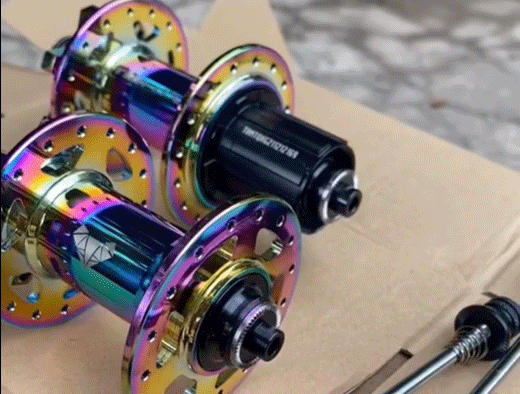
Conclusion:
Maintaining your bike's hub properly is essential for ensuring optimal performance and durability. By dedicating some time and effort into hub overhaul, you can get your bike running smoothly and efficiently again. Whether you're a competitive cyclist or a casual rider, a hub overhaul is an investment worth considering. We hope this guide has been helpful and informative as you take steps to keep your bike running efficiently.
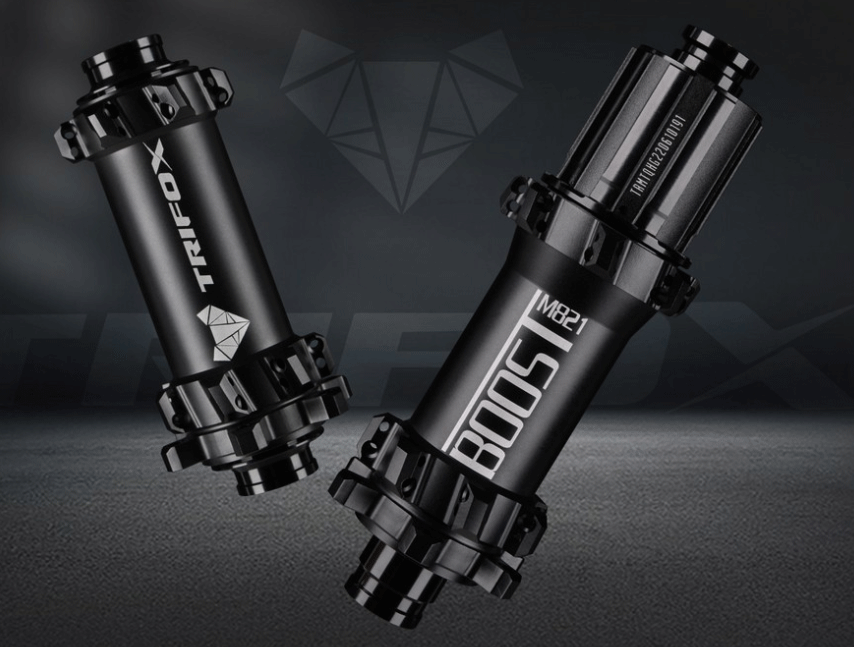
As a mountain biker or bicycle enthusiast, you may find yourself in a situation where you need to convert your bike's quick-release hub to a thru-axle. While this may seem like a daunting task, it is actually quite doable with the right tools and knowledge. The benefits of a thru-axle include increased stiffness, improved handling, and better alignment between your wheel and frame.
So, if you're ready to make the switch, let's dive into how to convert a quick-release hub to a thru-axle.
Step 1: Identify your Hub Specs
Before you start the conversion process, you need to identify the specs of your hub. This includes the size and spacing of the hub, which will determine what kind of thru-axle you need. For example, some mountain bikes use hubs with a 135mm spacing and 9mm axle diameter. You'll need to find a thru-axle with the same specs in order for it to work with your bike. If you're not sure what specs you have, you can usually find this information through your bike's manufacturer or by measuring the hub yourself.
Step 2: Remove the Quick Release
The next step is to remove the quick release skewer from your bike. This can usually be done by unscrewing the end caps of your quick-release hub and gently pulling out the skewer. Make sure to keep any washers or spacers that may be attached to the skewer.
Step 3: Install the Thru-Axle
Now it's time to install your new thru-axle. Make sure it has the correct size and spacing for your hub, and determine the orientation of the threads. Some thru-axle designs have a lever or handle that allows you to tighten or loosen the axle by hand, while others require a tool. Follow the manufacturer's instructions for installation, being sure to grease the threads to prevent corrosion or seizing.
Step 4: Adjust your Disc Brakes
If you have disc brakes on your bike, you'll need to adjust the brake calipers to accommodate the new thru-axle. This may require loosening or removing the brake bolts and repositioning the caliper. Be sure to align the brake pads with the rotor correctly, and test the brakes thoroughly before riding.
Step 5: Test Ride and Adjust
After you've installed the thru-axle and adjusted your disc brakes, it's time to test ride your bike. Take it for a short spin around the block or a nearby trail, and check for any unusual noises or vibrations. If everything seems to be working well, continue to ride and make any necessary adjustments along the way.
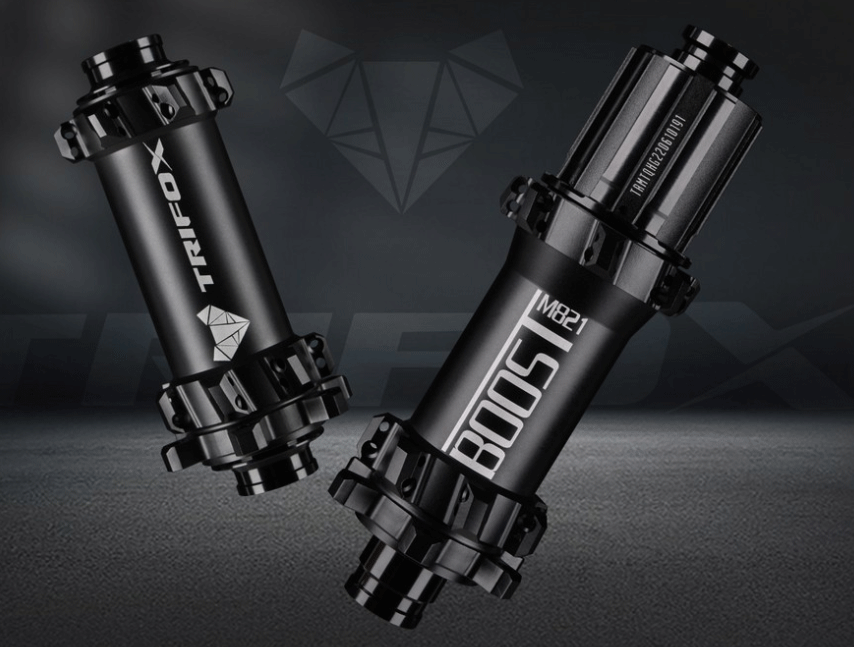
Conclusion:
Converting your quick-release hub to a thru-axle may seem like a big undertaking, but it's actually a fairly simple process. By following these steps and using the right tools, you can improve the performance and handling of your bike with a few easy modifications. Remember to always consult the manufacturer's instructions and take your time to ensure a safe and successful conversion. Happy riding!
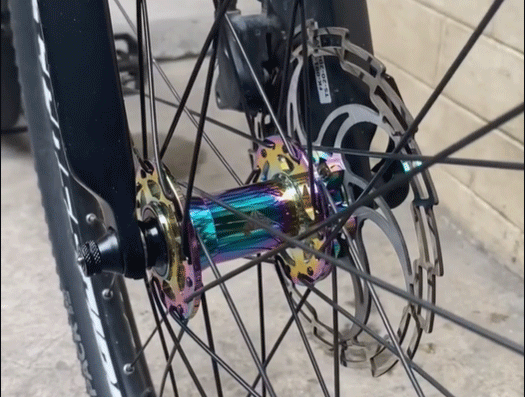
When it comes to mountain biking, choosing the right hub is critical to the performance of your bike. The hub flange spacing is something that might be overlooked, but it's an essential factor when selecting the right hub for your mountain bike.
To begin, what is hub flange spacing? The hub flange spacing refers to the distance between the two flanges on a hub. The distance between the flanges affects the tension of the spokes and the lateral stiffness of the wheel. The wider the hub flange spacing, the more the spoke tension will be reduced, making the wheel less stiff. In contrast, if the hub flange spacing is narrower, the spoke tension will be higher, making the wheel stiffer. Hub flange spacing affects wheel strength, and the right spacing will ensure the longevity and durability of your wheels.
The Trifox Bike Hub M827 for MTB offers an ideal hub flange spacing. It features a 110mm front hub flange spacing and a 148mm rear hub flange spacing. The wider hub flange spacing provides greater lateral stiffness of the wheel, resulting in better control and stability during your mountain biking activities. This ensures that your bike can handle demanding terrain, steep inclines, and challenging conditions.
The Trifox Bike Hub M827 With a lightweight design and durability, this hub is perfect for mountain biking. The alloy construction ensures that the hub can handle the impact of rough terrain, providing a secure and stable foundation for your wheelset. You can rest assured that the hub will be able to handle the demands of your mountain biking adventures.
Another essential factor when selecting the right hub for your MTB is the hub's engagement system. The Trifox Bike Hub M827 features a high-engagement system with 72 points of engagement, providing a rapid and responsive engagement experience. This means you can take on steep climbs with ease, as the hub connects directly to the drivetrain, ensuring maximum power and control.
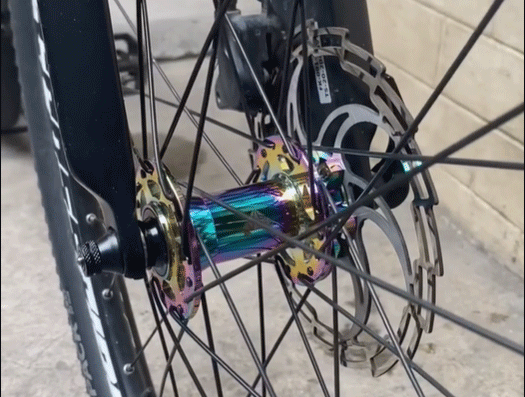
In summary, the hub flange spacing is an important consideration when selecting the right hub for your mountain biking activities. The Trifox Bike Hub M827 for MTB offers an ideal hub flange spacing, high-engagement system, durability, and lightweight design. These features ensure that you have the best experience and performance during your mountain biking adventures. Choose the Trifox Bike Hub M827 for MTB if you're looking for a robust, high-performing, and reliable mountain
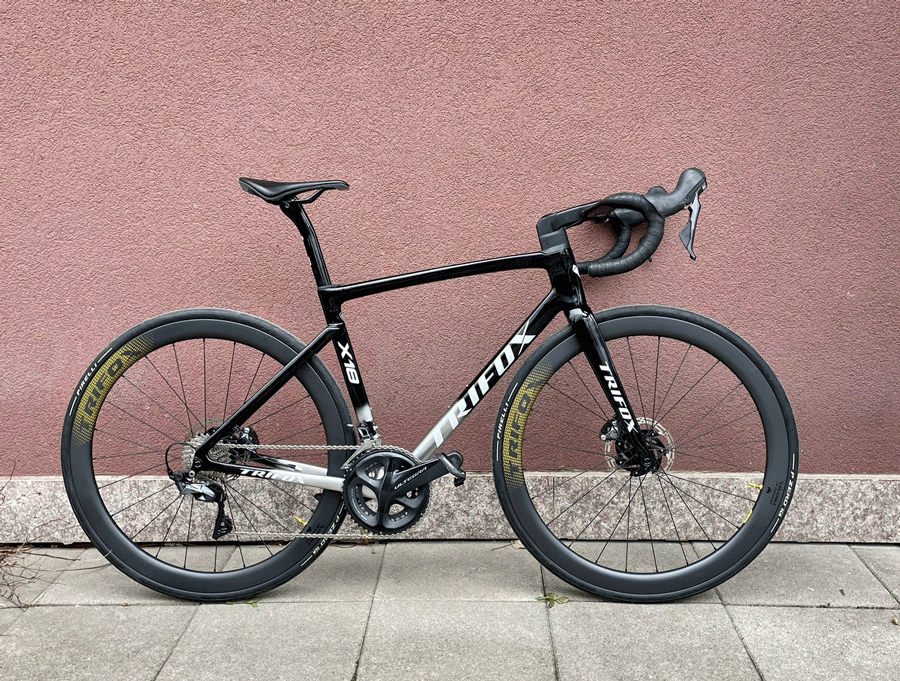
If you are into biking, then you must know the importance of a cassette hub. A cassette hub is the central part of a bicycle wheel, providing a smooth ride while also transferring power from the rider's pedals to the wheels. It is an important component for a cyclist to have a comfortable riding experience. But, do you know everything there is to know about a cassette hub?
In this blog post, we will go in-depth about cassette hubs and understand how it plays a vital role in cycling.
1. What is a Cassette Hub?
Before we dive deep into cassette hubs, let us first understand what it is. A cassette hub is a central component of any bicycle wheel that attaches to the axle and holds the cassette, which houses the different gears. It contains an internal body, which lets you change the gears with the shifter while you are cycling. The cassette hub itself contains ball bearings, impacting the bike's speed, comfort, and maneuverability.
2. Components and Types of Cassette Hub
Cassette hubs come in various types, and they differ in the number of gears, the number of spokes, and the size of the axle. The most common cassette hub types are 8-speed, 9-speed, 10-speed, and 11-speed hubs. The number of gears in cassette hub also determines the degree of versatility in the bike. In addition to the number of gears, the cassette hub's components include the body, free hub, pawls, driver mechanism, seal, and bearings. All of these components play an essential role in ensuring a smooth and comfortable ride.
3. Benefits of a Cassette Hub
Cassette hubs have numerous benefits, making them a popular choice among pro cyclists and biking enthusiasts worldwide. Some of the primary benefits are that the cassette hub can be easily removed for maintenance, it provides a smooth and efficient ride, and it can accommodate different gear ratios to suit various riding needs. Maintenance is also easier since you can quickly change the cassette to replace the damaged or worn-out parts. The cassette hub also improves bike performance, and the power transfer from the pedal to the wheel is effective and quicker.
4. How to Maintain Cassette Hub
Cassette hub requires maintenance to keep them from wearing out too fast, compromising your bike's performance. Here's a maintenance tip you can use to extend the lifespan of your cassette hub. Firstly, clean the cassette hub regularly to prevent dirt and mud from clogging the bearings. Secondly, lubricate your cassette hub often to reduce friction. Lastly, check the cassette for wear regularly, replace the parts if necessary.
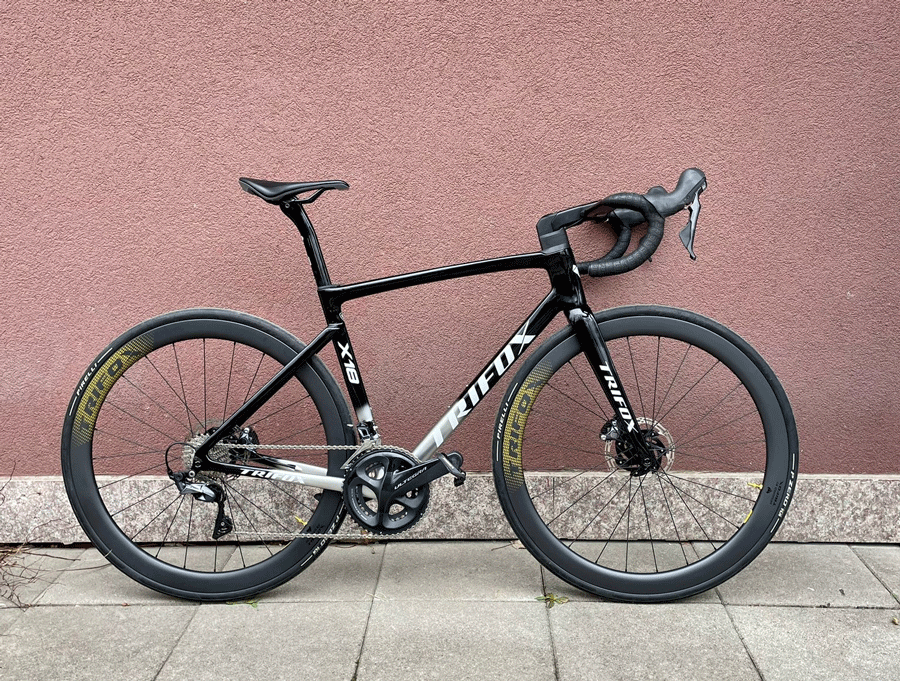
Conclusion:
In conclusion, a cassette hub is a vital component of your bike wheel that can significantly impact your cycling experience. Understanding how it works and how best to maintain it is crucial for improving the performance of your bike and extending the lifespan of the cassette hub itself. With the tips we have discussed here, you are now better equipped to make the most of your biking experience with a cassette hub.

























































